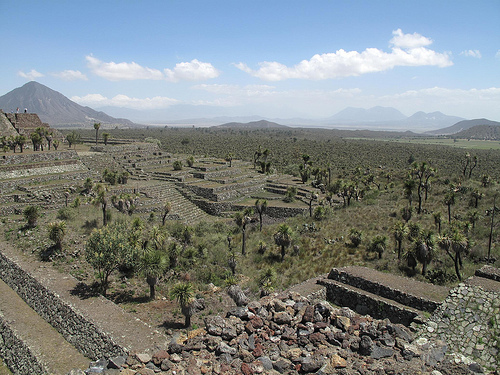

Location: 30 km (19 mi) Northeast of Oriental, Puebla Map
Open: Tue- Sun
Official Site
Cantona is an ancient archaeological site located 30 km (19 mi) Northeast of Oriental in the state of Puebla in Mexico. Only small fraction of the site is open to the public due to ongoing research and archaeological digs that continue, but whatever still impresses with its magnitude and size. Cantona Archaeological Site reached its peak in the Late Classic period between 600 AD and 1000 AD and was probably inhabited by the Olmec-Xicalanca group of tribes. Cantona was abandoned in the late 11th century. Although there is speculations on what exactly happened to the city this Mayan city probably fell in a face of massive crop failures and subsequent famines. Unlike many other sites in Mexico the structures of Cantona were not overtaken by jungles and little looting was done on the site due to its remote location. So even today this ancient city presents us with new information about the people who once lived here.
Henri de Saussure claimed to have discovered
Cantona in 1855 after a lengthy and prolonged search, Nicolás León,
based on a Saussure publication, visited the zone in the early 1900s
and explored the site, he left a full and comprehensive description
of structures and surface objects at that time. Cantona is derived
from the Nahuatl word Caltonal which means "House of the Sun".
In 1938, Paul Gendrop mentions that Cantona occupies an area of
almost 20 km long by 12 kilometers wide. As far the site
architectonic elements distribution, he noted that it is formed by
numerous rectangular rooms 20 to 30 meters long by 12 to 20 meters
wide, delimited by thick stone walls, fairly straight and well
preserved.
Eduardo Noguera, in 1958, after a tentative study
of ceramics and constructive systems, noted that Cantona occupies
only half the size of what was previously calculated by Paul Gendrop
and locates it, chronologically in the preclassical horizon (200 to
100 BC), coinciding with data available then.
In 1980
archaeologist Diana Lopez de Molina, based on aerial photographs,
made a sketch of the settlement and dug some stratigraphic wells
that allowed her to propose a tentative timeline to the occupation
of the area. Previous studies allow the assumption that this
prehispanic city submitted was occupied from the late preclassical
horizon (200 BC) to the early classic (0 to 200 AD), which makes it
one of the oldest cities of the country.
According to
investigation, Cantona would be chronologically situated between 600
and 1000 AD; its splendor coincides with the fall of the main cities
of the classical horizon (it is even thought it had something to do
with the Teotihuacan fall, by obstructing passage of products from
the coast to the Highlands) and with the arrival of warrior people
who soon seized and dominated the region.